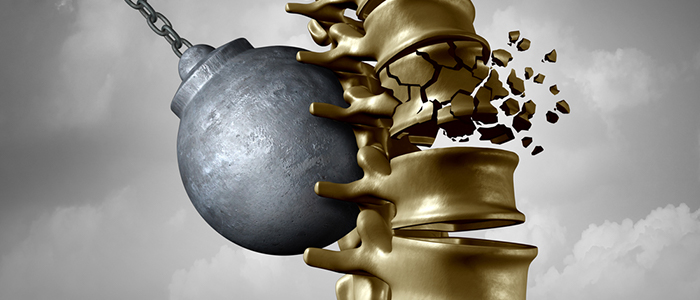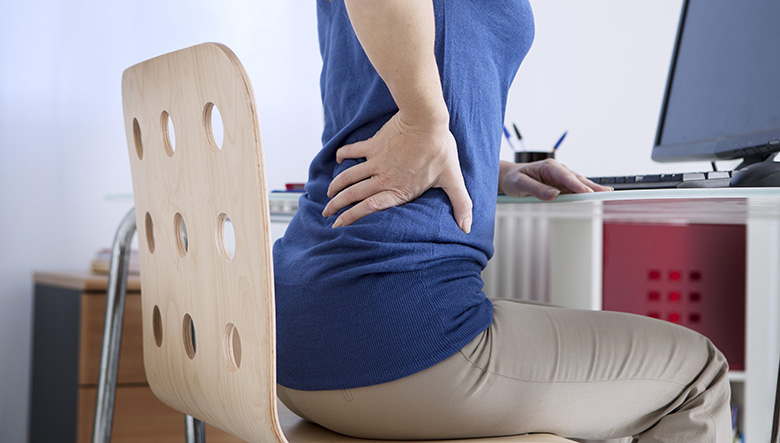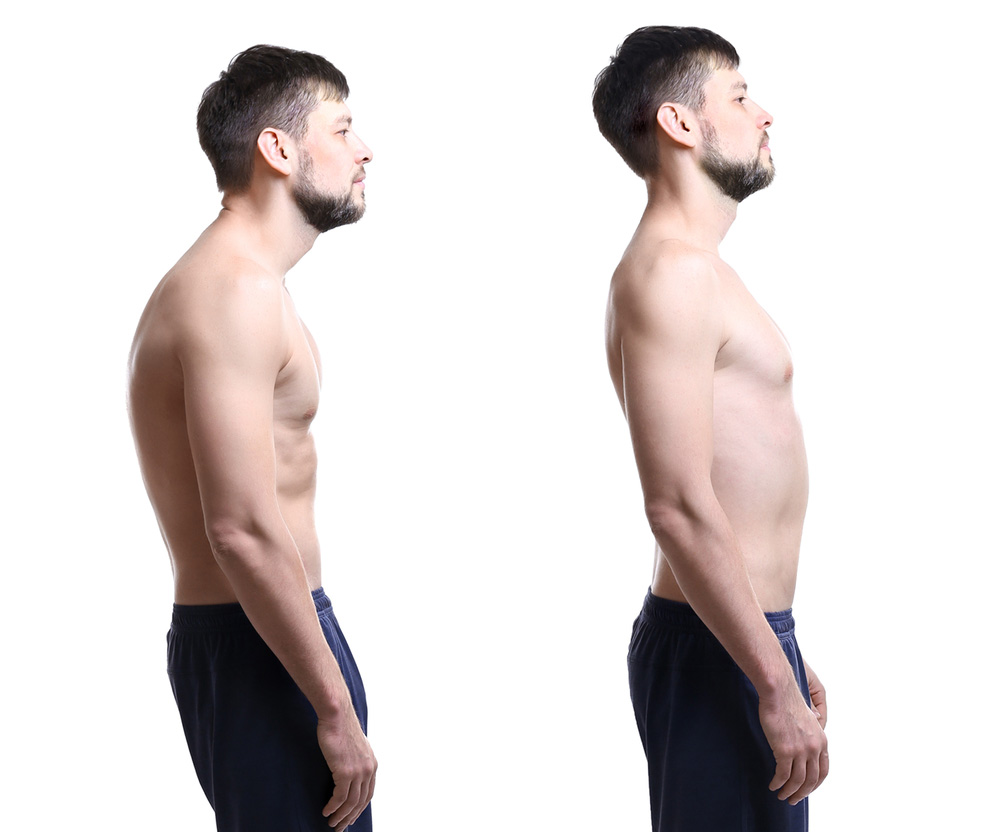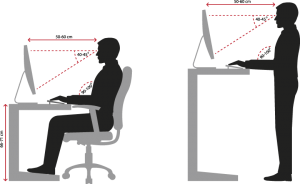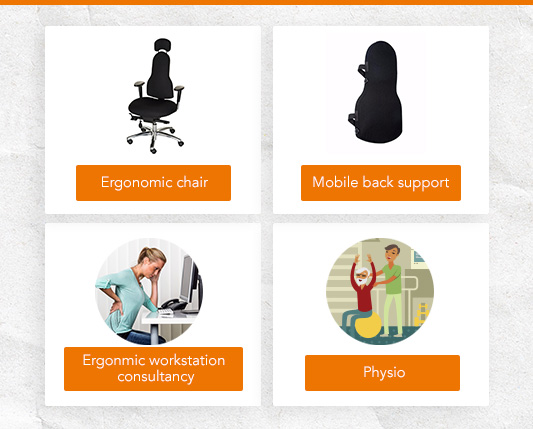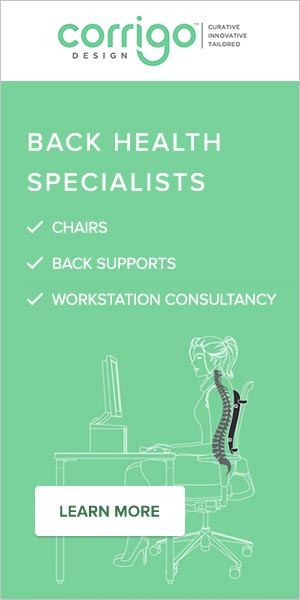Slouch At Your Peril. 8 Tips To Help Avoid Back Problems
Are You Aware That Back Pain is the Leading Cause of Sick Leave?
Factors That Increase Your Risks of a Back Issue Are:
a). Occupation.
– Physical work.
People with physically demanding jobs have a greater risk of back
problems. Repetitive lifting, pulling, pushing, bending sideways and twisting.
– Repetitive sedentary work.
Including typing, computer design work, laboratory work, sitting in a slouch or twisted posture.
b). Genetics.
Some people inherit a predisposition to back issues.
c). Health Condition.
Some conditions cause inflammation in the body and back pain.
Excess body weight causes extra stress on the disks in your lower back.
So, as the majority of us do spend a significant amount of time at our computers, it is important to address the postural aspect.
Do You Tend To Adopt Any Of The Following Postures?
All of these example images above will have an impact on your spine over time. This is because when our spine is adopting a C shape slouch instead of a healthy S shape posture, you are continually putting pressure on your spine.
Maintaining a healthy posture, keeping your muscles uniformly strong, ensures that blood, nutrients, and oxygen can flow and the spine doesn’t push down on the discs.
To help visualise what is happening to your back, see the demonstration of what happens to your discs when slouching in the below video…
(nb whilst not anatomically correct, it gives you a good idea!)
Along with the double impact of aging, when the spinal discs gradually lose some of their water content. This makes them less flexible and more prone to tearing or rupturing with even a minor strain or twist.
Do You Have Disc Disease?
Pain associated with disc disease generally stems from inflammation and abnormal micromotion instability.
This in-turn causes swelling in the surrounding spinal structures, which then results in muscle tension, spasms, and local tenderness. Does this sound familiar?
The Results Of Not looking After Your Back Are The Following Advanced Conditions
Poor posture can also be the contributing factor towards conditions such as:
- Frozen shoulder
- RSI or carpal tunnel syndrome
- Disc issues, such as herniated, slipped or bulging discs
And exacerbates conditions such as:
- Arthritis
- Fibromyalgia
- Sciatica
- Scoliosis
And yet, just a few simple techniques to ensure you are watching your posture can have a hugely beneficial impact on the health of your back and upper limbs.
Your Physical Appearance Will Eventually Start to Be Affected Too
Over time if not corrected your back will look like this, with muscles shortening over time!
Not only does this cause damage and pain, it is not a great look.
The longer you spend slouched or hunched over, the greater the impact on your spine and the longer it will take to get your back healthy again. Impacting on your ability to enjoy exercise and stay fit and proactive.
My Own Experience
I have a MSc in Health Ergonomics, and I have previously experienced episodes of back pain. Ergonomics is a psychophysiological discipline that, with a knowledge of biomechanics and anthropometrics, allows a practitioner to identify any physical influencing factors that are exacerbating your condition or putting you at risk of developing a back issue.
Passionate about preventing back pain, I developed my own ergonomic posture correcting products that adapt to fit you perfectly, and are therefore truly effective in the battle against back pain. Through years of experience and research, I am the expert in good posture and know why it is essential to ensure you have the right tools and knowledge to protect your back from long-term damage.
The 8 Solutions To A Better, Healthier Back
The key is to always have your lower back supported and your body strong but relaxed, to reduce the cause of the irritation.
1. Reduce your Stress
When working long hours, or during stressful periods, it is all too easy to take all the tension in the back. This is why back pain is the No.1 result of sick leave. Other things can result in back pain so that is why it is so important to help it relax & support it at all times. Try incorporating a few moments to take a small break from your work during the day, such as a lunch break away from your desk – it helps refocus too. Pilates, Yoga or Tai Chi are wonderful for both the mind and the body.
2. Encourage a relaxed posture
Supporting your back to encourage a relaxed, neutral posture at all times is essential. When sitting, this includes having your legs relaxed, your hips and lower back supported in the right place and your arms kept in a relaxed position in line with your desk.
Everyone’s body is a different shape, even two people of the same height, so do ensure you can adjust your chair to suit your own body. This will reduce tension build up in your back, hips, shoulders, wrists, and neck. Correct placement of the screen, keyboard and mouse help to further encourage this and subtly remind you to sit upright and back in your seat. The worst offender is the laptop!
Do You Have This Perfect Workstation Set Up?
3. The Right Chair
So having the right chair or back support is much more important than you might first imagine. The wrong chair encourages a slouch and you will find yourself always battling against it instead of being free to work without the distraction.
4. Standing Breaks
It is also vital to remember to take frequent standing breaks when sitting, at least every hour, even for just a few minutes, to get the muscles activated and nourishment back into your discs. Try standing when on a call, or using a higher worksurface for different tasks. If you really can’t take a break, it might be worth considering a sit-stand desk and incorporating standing breaks into your work this way – spread regularly throughout the day rather than all in one go.
5. Physio
Back pain is multi-causal in its nature, with posture, stress, nutrition and exercise all having an impact on the person’s overall well-being and therefore level of risk of back pain. Treatment with a physiotherapist will release the tension build up, diagnose areas of weakness and provide you with key exercises to prevent and reduce further inflammation.
However, this will quickly be undone if you then just continue to slouch when you are working.
So ensuring you have your workstation and chair set up correctly for you is often the missing piece of the puzzle and often simple changes are highly effective in reducing any tension and pain build up whilst you are working at your desk.
6. It’s The Law
It is, in fact, the law to have your workstation checked at work (HSE 1992 Act). You are in your rights to ask for an improved workstation if it is not suitable for you and your backs needs. It is a law that has been in place since 1992 but not many people know about it!
7. Unlearning Bad Habits
Learning to sit correctly can be a long process, as you are trying to reverse deeply ingrained habits. So you need to look at all the subtle psychophysiological factors encouraging a slouch and correct these to help you adopt new healthier postural habits.
8. Reminders
The key is to adjust everything to keep you supported and upright, without having to remember all the time yourself – It’s so easy to forget as soon as we start to concentrate at work! Why not try setting reminders to take a standing break at least every hour? This will keep your discs nourished and will also benefit your brain.

